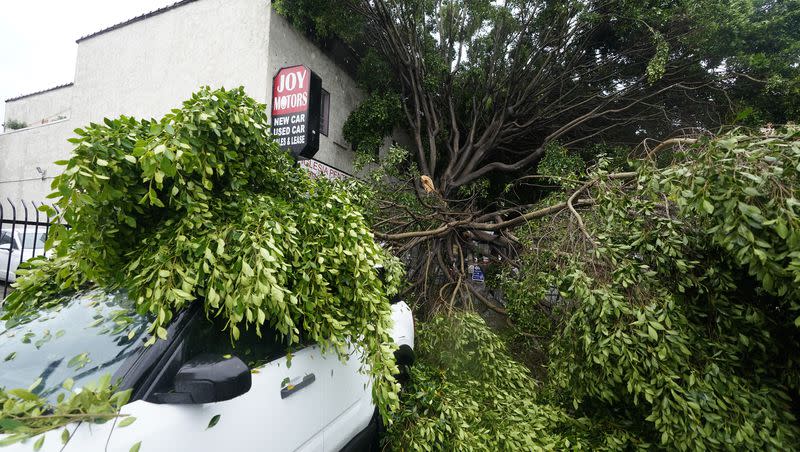Earthquake shakes Southern California as Tropical Storm Hilary makes landfall

A magnitude 5.1 earthquake struck near Ojai, California Sunday afternoon, just as Southern California residents were dealing with tropical storm force winds and rain from Tropical Storm Hilary — the storm was downgraded from Hurricane Hilary earlier on Sunday.
According to the U.S. Geological Survey. the earthquake was centered about four miles southeast of Ojai, about 80 miles northwest of Los Angeles.
The quake struck shortly after 2:40 p.m. PT at a depth of approximately 9 miles and was followed by at least six aftershocks measuring above 3.0.
Per ABC, the earthquake was felt across the greater Los Angeles area, including the Inland Empire.
The Los Angeles Times reported that there were no reports of damage in Ventura County and that an aerial inspection by a Ventura County helicopter of Lake Casitas Dam, Matilija Dam and the City of Ojai revealed no issues.
On a live broadcast, seismologist Dr. Lucy Jones said it was the first time that a magnitude 5.0 quake or higher had registered in the Ojai area since 1941, reported USA Today.
“Every earthquake has something to teach us. The smaller ones we see so often, you start running out of new things to learn,” Jones said. “This is the first time we’ve had a magnitude 5 since 1932 in exactly this location. Within the Ventura basin, it’s just not common.”
Daniel L. Swain, a climate scientist at the Institute of the Environment and Sustainability at the University of California, Los Angeles, told USA Today that the earthquake is coincidental, and not related to heavy rainfall in the Los Angeles area brought on by Tropical Storm Hilary.
Per the USGS website, there is “no pattern in California of large, damaging earthquakes occurring more frequently during periods of heavy precipitation or periods of drought. It’s unlikely that seismic hazard is affected by precipitation. This makes sense as rainwater cannot easily percolate several kilometers below the earth’s surface to the depths where most earthquakes occur.”

